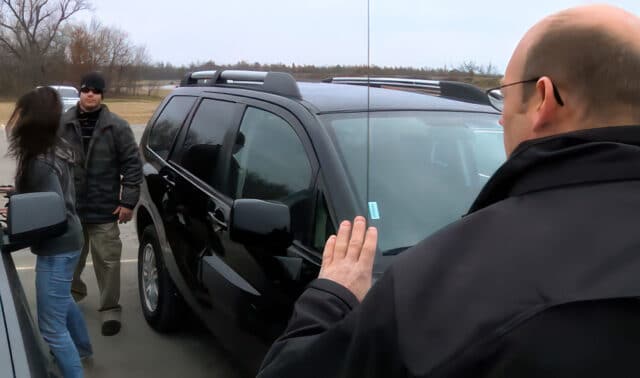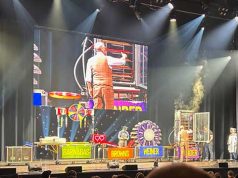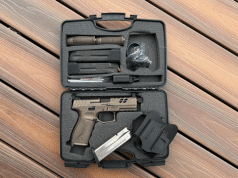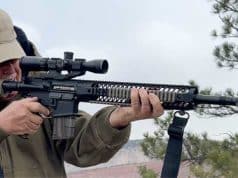Michael Bane…Notes on “Surreptitious Draw”
12.6.2023
KEY POINT: I think part of the problem here is our choice of wording.
1) It’s not necessarily a “surreptitious draw,” but rather a “surreptitious access and draw. Arguably, surreptitious access is maybe the more important part, but generally instructors focus on the “draw.”
2) “Surreptitious access and draw” actually covers a large range of techniques and movements. These techniques and movement are often specific to the holster placement and the gun. Depending on your particular situation, other factors may include what the aggressor is doing/acting, (Are you the only target or are these others present to divide the aggressor’s attention; is the aggressor relatively calm, as in a straight up financial robbery, or is the aggressor spun up, as in an active shooter or political situation), the availability of concealment (is there a movement you can make to place you in a partially concealed position that conceals your draw side?), the availability of cover (remember, cover stops a bullet), direct/indirect lines to exits, and the presence and number of “innocent bystanders.”
SIDE NOTE REGARDING BYSTANDERS: I once designed a course of fire called “The Happy Wedding Chapel” for a USPSA match…this predates the KILL BILL movies, BTW. It was designed as my co-designer, the late Dave Arnold said, to be a “brilliant nightmare.” Long, narrow chapel, based on one I visited for a magazine article in Las Vegas. Maybe 12 feet wide, with a 4 foot reflecting pool right down the center. Unknown number of assailants (I think I spec’ed 6 or 7); many innocents taken hostage, minimizing visibility of the aggressors; lots of random bystanders, many of who remained seated (and susceptible to shoot-through). The competitor could not cross the reflecting pool and once in the “chapel” could not step out. This stage could not be run under current USPSA or IDPA rules, but it taught me a lot…the bride almost always got shot, and nobody made it through without penalties. Very similar to THE BEST DEFENSE’s “Mass Casualty Event,” the sim I based on the 2015 Paris Bataclan terrorist attack, which Dr. William Aprill and I designed using input from U.S., French and Israeli counterterrorism experts.
SHORT CONCLUSION: The Real World is full of people who constantly get in the way and often end up dead.
SIDE NOTE REGARDING COVER/CONCEALMENT: Mention that both cover and concealment come with a TIMER ATTACHED…reference the 2013 Kenya mall terrorist attack surveillance footage…moving from cover/concealment to new positions was only way to survive…movement can be on 360-degree circle.
Quote from Michael Seeklander we used in THE BEST DEFENSE:
“Want to double the speed of your draw? Who doesn’t? But it’s simple and we can teach you how in a couple of minutes. Simply start with your hand on the gun. Simple, huh?”
NOTE: Not just placing your hand on the gun, but achieving a solid shooting (or “master,” other terminology) grip.
Seeklander is, of course, right, but here’s where things get tricksy. Remember the two parts of this equation — surreptitious access and surreptitious draw. Let’s break it down:
Surreptitious Access includes:
1. Moving the strong arm to the correct position to access the concealed gun without “telegraphing” the movement to the aggressor. That’s where we find our old bugaboo, “Motion Consistent With a Draw,” which I’ve talked about before and we’ll talk about later.
2. Securing a sold firing grip on the gun while it stays in concealment.
3. “Bumping” the gun to break its adhesion with the holster. Failure to do this in a pocket draw, for example, is why we see people draw the holster with the gun. When I first wrote about this during the last Geologic Era, “real instructors” told me to get another holster. Nope, adhesion — “a steady or firm attachment,” says the definition — is one of those pesky physics thing that is with us always. Without going into detail — get thee behind me, friction coefficient! — you are always going to have to use a bit more force to overcome the adhesion, or friction, between 2 surfaces in contact. It varies from holster to holster, leather or kydex, but it is always there. And when you’re trying not to make gross motor motions that telegraph your intentions to the aggressor, you need to make this a specific motion!
4. You are ready for a planned and practiced draw stroke — remember, this isn’t your normal presentation; it behoves you to know how it’s going to work in advance. Notice I didn’t say, “Now, present!” Whether you draw or not is dependent on your specific situation at the time. At this point you are in a position loosely referred to as “concealed ready” (“ghetto ready” anecdote)— you have a firing grip in the gun; the gun is free from the holster; you are prepared to present the gun, but the gun is still concealed; you are not sure whether you are facing a lethal threat.
NOTES On Presentation: When/if you go to presentation is totally situation-dependent, and obviously they run the gamut from simple misunderstanding to potential aggressor realizing he or she has made a mistake in the victim selection process to “HOLY CRAP I AM IN THE SOUP!” The advantage of a “concealed ready” is you can quickly draw to either an “exposed” ready position — low ready, high compressed ready or some sort of SUL position (that is, the gun pulled into the chest and pointed straight down).
KEY POINT on Presentation: Without going into a discussion on which ready position when, the key point is that when you present the gun, when people can see it, your legal situation has changed. Most states have laws criminalizing both pointing a firearm (or a knife or presumably a rocket launcher or flamethrower) at a person or threatening to point a lethal weapon at a person. First, I am not an attorney…speak to Andrew Branca for clarification. In Colorado there are 2 laws that apply — Menacing with a lethal weapon, which is a Class 5 Felony, and the lesser offense, Disorderly Conduct, display of a lethal weapon in a manner “calculated to alarm,” which is a Class 2 Misdemeanor.
Once again, I am not an attorney and I do not offer legal advice, but if I may be charged with a crime, I’d rather it be a misdemeanor than a felony.
You start to see the advantages of a concealed ready position?
In some cases, the “surreptitiousness” doesn’t need to be complicated. You can angle your body in such a way that the aggressor cannot see your gun hand. While this will probably not work with Wild Bill Hickok, it’s unlikely you’ll be facing him.
I have found this works well in Force-on-Force, especially if I can move to cover/concealment before moving my hand to the gun…say a convenience store robbery scenario, where the Doritos stand allows me to get the gun into play before the aggressor registers what I’m doing.
And there is still the old “gun behind the back” trick. We once filmed a pretty realistic reenactment of the shootout at the O.K. Corral, with Sheriff Jim Wilson and LAPD SWAT legend Larry Mudgett. Both men — both experts on the most famous shoot-out of all time — agreed that Wyatt walked down that street with his gun unholstered and hidden under his coat, slightly behind his leg.
PERSONAL ANECDOTES (TIME PERMITTING): Truck with 3 men trespassing and not leaving when asked. Gun started behind back; then went to high compressed ready and as true rolled toward me went to full firing position and started preparing trigger. Drive immediately stopped, threw up his hands and yelled “NO! NO!”
And what did I do after point the gun at three peckerheads? Of course…I called the cops.
Here’s a comment from Gabe Suarez to a question on one of his forums in 2006:
“The human eye is drawn to quick movement, and while your lighting draw may get one or at best two, if there’s a third bad guy things will become difficult very quickly. Perhaps a better solution in some cases is the surreptitious draw. My studies indicate that many old-time gunfighters practiced subtle methods of getting the gun into the hand in a very low key and unobtrusive manner.
Fairbairn, I understand actually spent time learning sleight of hand tricks to enable him to produce a pistol like a rabbit out of a hat. We may not need to go that far, but some time spent on deploying the gun s-l-o-w-l-y and hidden from the eyes of the enemy may pay off big dividends one day.”
BACKGROUND: I started writing about surreptitious access and draws after working with Karl Rehn, Walt Rauch and Skip Gochenour (from the National Tactical Invitational) in F-O-F scenarios. You know of Walt…Skip is an Old Skool PI and knows every freakin’ sneaky trick in the book. I specifically worked with Walt on “motion consistent with a draw.”Walt spent so much time undercover and in crazy dangerous situations that he was a master of numerous draws from concealment. So we worked on breaking down the motions leading to the draw and the best ways to not let that happen on a surreptitious draw.
KEY POINT: If you do not know what a draw from various positions looks like, this is a very bad thing. You need to rectify this ASAP.
But when you get right down to it, this is hard to training in a group situation. Right off you’ve got the safety issue, plus you’re looking at so many variables! It almost starts out with, “Go you know what a draw looks like? OWB, IWB, AIWB, 2 o’clock, behind the hip, pocket, shoulder bag.
SUMMATION: Surreptitious Access and Draw are a seriously neglected skill that is gaining in importance in today’s self-defense environment.
SHOW LINKS
The Surreptitious Draw/THE BEST DEFENSE
Stealth Draw/Massad Ayoob,GUNS Magazine
The Surreptitious Draw: A Neglected Skill/USACarry
The Covert Draw/Claude Werner. THE TACTICAL PROFESSOR
More Guns and More People Carrying, the Odds are Someone Near You is Packing/John Lott




